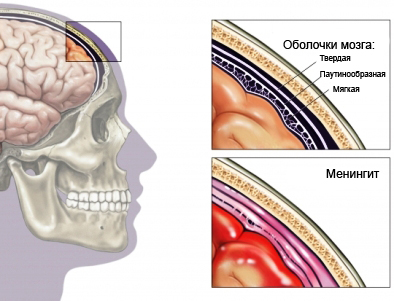Plague
Description plague
Plague – deadly bacterial infection. The disease develops after the bite of an infected flea, processing or consumption of food contaminated animal. There are several types of plague, depending on the location and development of symptoms:
- Pneumonic plague (lung) – by inhalation of infected droplet or a progression of different types of plague;
- Bubonic plague (lymph nodes) – infection occurs after being bitten by a rodent flea or;
- Lememia (infection of the whole organism) – infection occurs after being bitten by a rodent flea or;
- Pharyngeal plague (throat and neighboring lymph nodes) – It occurs after ingestion of infected tissue or inhaling large droplets, infected with plague.
Reasons plague
Infection causes the plague bacteria Yersinia pestis. It is spread by droplets in the air. Infection of pneumonic plague occurs from an infected person. Bubonic plague, and no septic respiratory complications is not transmitted from person to person.
Risk factors for plague
Factors, increase the risk of infection with plague include:
- Contact with the plague bacteria;
- Biological terrorism;
- Contact with rodents;
- Taste rodent.
Symptoms of plague
Symptoms depend on the type of plague. They usually develop within two to eight days. Plague can progress over several days and cause Sepsis, meningitis or death. The first symptoms after a biological attack would appear within a few days. Soon after the first symptoms of the plague usually death occurs.
Symptoms of pneumonic plague include:
- Fever;
- Chills;
- Weakness;
- Headache;
- Cough, with bloody or watery secretions;
- Labored breathing;
- Chest pain;
- Nausea, vomiting and diarrhea.
Symptoms of bubonic plague:
- Fever;
- Chills;
- Weakness;
- Headache;
- Swollen, sensitive lymph nodes;
- In the area of damaged skin lymph nodes may be red and stiff;
- Bumps or sores on the spot flea bite;
- Anxiety;
- Lack of energy;
- Possible seizures, confusion;
- Nausea, vomiting and diarrhea.
Symptom of pharyngeal plague:
- Swollen lymph nodes.
Symptoms of septicemic plague and progression of other forms of plague:
- Bleeding under the skin;
- Black toes, hand or nose;
- Abnormal blood clotting;
- Labored breathing;
- Shock;
- Organ failure;
- Death.

Diagnosis of plague
The doctor will ask about your symptoms, history, sources of possible contamination, and perform a physical exam.
Tests may include:
- Chest X-ray;
- Blood tests, to search for signs of infection;
- Blood test to detect antibodies to plague bacteria;
- Study of body fluids using special equipment;
- Culture fluids, to test for bacteria.
Treatment of plague
It is important to start taking antibiotics as soon as possible after exposure. Any delay greatly increases the risk of death. The drug is injected into a muscle or into a vein. Then appointed other medicines, which can be given orally. Patients with symptoms of pneumonic plague have to be isolated, to protect others. Doctors and visitors should wear a mask, gloves, goggles and protective clothing. You may need to draining lymph nodes. In the case of plague should immediately report it to public health authorities.
Medications for the treatment of plague
For the treatment of plague can be used the following antibiotics:
- Streptomycin (It may be assigned together with tetracycline);
- Gentamicin;
- Tetracycline or doxycycline;
- Chloramphenicol;
- Ciprofloxacin.
Supportive therapy for patients with septic plague
Health care providers should monitor the patient's condition and take appropriate action. Maintaining the function of the heart, normalization of blood pressure and oxygen supply to the lungs are of paramount importance.
Prevention of plague
Antibiotics may prevent infection after contact with the sick with plague. The drugs should be taken daily, while in contact with the patient, and seven days after the last contact. Besides, hospital staff and patient should wear masks.
In the case of biological terrorism, antibiotics may be prescribed after the first signs of coughing. Vaccines for the pneumonic plague does not exist.
Measures to prevent natural plague:
- Do not touch dead rodents or sick cats;
- Use insecticides, to get rid of a rodent house;
- Eliminate rat habitats near the house;
- Do not let yourself walk the dogs and cats in areas, where the plague is common.
